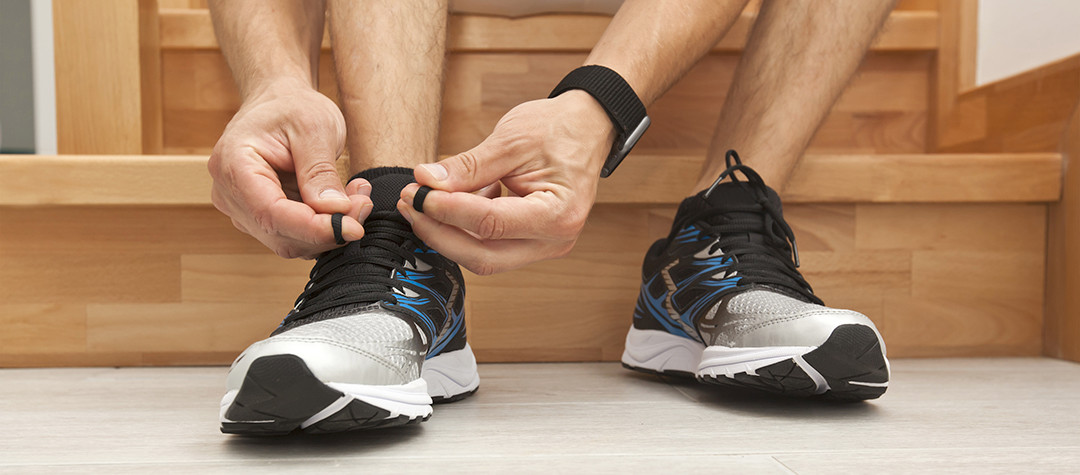The COVID-19 pandemic has fundamentally altered the ways we live and behave. With restrictions on when you can leave your house, how often you can do so, which public spaces you can access and who you can be around, you may be facing significant disruption to your usual running routine and you may even have put your training on hold.
Nevertheless, if you are stuck at home due to social distancing rules, or due to a personal decision to minimise risk, there are still some exercises you can do in order to maintain your fitness levels and avoid undoing your previous hard work. Here, we take a look at five examples of exercises you can do from the comfort of your own home.
1. Home-Based Running
Depending on your personal circumstances, it may still be possible to persist with a basic running routine from the comfort of your own home. If you need to find the motivation for this, then it’s a good idea to take part in one of our Virtual Events .
For example, if you happen to own a treadmill, or are able to gain access to one, this is an ideal way to replicate your outdoor training without breaking any social distancing rules.
If you have a large garden, you may be able to use this space for your training. Running lengths can help you to easily track your running distance and although the stop/start nature associated with changes of direction is not a like-for-like replacement for marathon training or cross-country running, it can help you to maintain your fitness levels.
Even if you do not have access to equipment or a garden, you could try to find indoor alternatives. Perhaps your hallway is long enough for it to be a worthwhile option, or you could try replacing your usual running routine with runs up and down your staircase. Ultimately, these options mean you may not need to give up on running entirely.
2. Step Up Routines
Step up routines can replicate many of the movements associated with running and require very little space, which can be ideal when trying to find home workout solutions. You can use your staircase at home, or any other object that can safely support your weight and function as a step, while standalone step up platforms can also be purchased.
In terms of the routine itself, this can be as simple as a 'step up, step down' workout, or you could make it more complicated, creating different patterns, using professional equipment and adding in lunges, jumps, hops, knee raises and other similar motions, which can help to provide a more varied and comprehensive workout.
Step ups are an excellent complimentary exercise for runners, because they will work your quad muscles, glutes, hamstrings and calves. Additionally, it can be a demanding workout, testing your endurance and cardiovascular fitness.
3. Weight Training
Some runners are wary of weight training, fearing that muscle growth will lead to weight gain, which could, in turn, slow them down. However, unless you are lifting heavy weights regularly, while eating a relatively high-calorie diet, this is not a realistic concern and the benefits of weight training greatly outweigh any of the potential drawbacks.
In particular, weight training can play a crucial role in helping you to strengthen muscles and connective tissues, which can reduce your chances of suffering running-related injuries once life returns to normal. Additionally, weight training can potentially help you to generate more power, and can help you to burn fat as well.
When it comes to specific exercises that can be beneficial for running, squats, lunges and deadlifts can all be useful, while upper body exercises, such as bent over rows can help to strengthen your back and core muscles. With that being said, it is important that you practice good form and give your body time to recover after weight training sessions.
4. Yoga or Pilates
The current Coronavirus crisis and restrictions on outdoor activities may provide an opportunity to allow your body to heal, especially if you tend to experience pain in your knees or ankles from running. One possible option would be to take up a low or zero-impact exercise programme, such as yoga or Pilates .
There are a wide range of yoga styles to explore, depending on your preferences and goals, and mobile apps and DVD workouts can offer guidance for novices. In addition to improving fitness levels, yoga can be beneficial for enhancing flexibility and even for relaxation, which is especially important at the current time.
Pilates has some similarities with certain modern yoga styles. It too can assist with relaxation and flexibility, but places more of an emphasis on improvements to core strength too, which can help to improve your running posture.
5. Body Weight Exercises
Finally, body weight exercises are an excellent option for those who are socially distancing at home. As the name suggests, they rely entirely on your own body weight, meaning you do not need to purchase any additional equipment. Essentially, your body weight functions as resistance, helping to build and strengthen muscles.
These exercises offer many of the same benefits as weight training. Some of the best-known and most popular body weight exercises that you can safely perform at home include push ups, squats, lunges, leg raises and burpees. You could also add things like pull ups, if you have door frames that will safely support your weight.
Of course, the sheer number of different body weight exercises available provides ample scope for mixing things up, and this can be extremely important for home exercise, where repetitive routines can become boring. Try to come up with different workout routines, which combine the body weight exercises that you enjoy the most.










